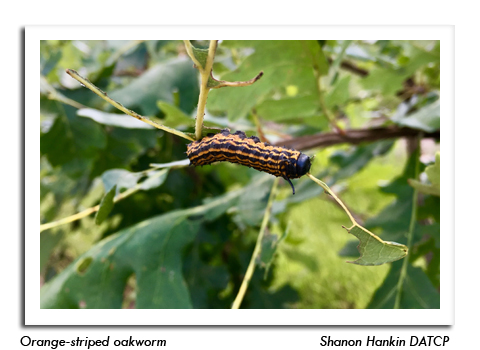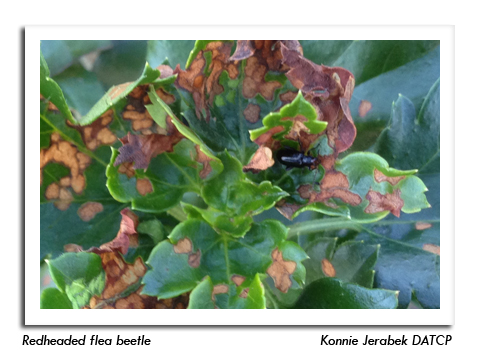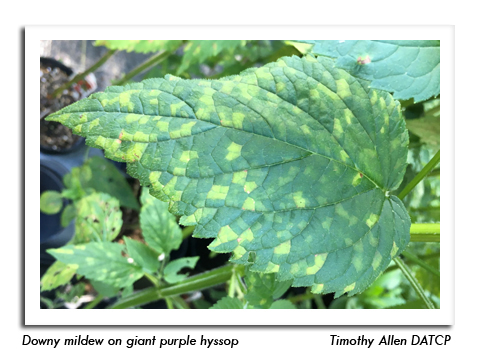
 |
|
|
Nursery & Forest
Volume 64 Number 18 Date 08/29/2019 ORANGE-STRIPED OAKWORM - Late-instar caterpillars were found on red oak trees at a nursery grower in Grant County this week. According to the inspector, a few of the young red oaks had been severely defoliated. As the caterpillars mature in September, they will descend from the tree to pupate in the soil. Red oak is reported to be favored host of this species, with chestnut and several other deciduous tree species listed as food plants. The heaviest feeding occurs late in the season (late July-August) and rarely threatens the health of the tree, but successive years of defoliation may be a concern for younger trees. Management includes pruning infested branches at the egg and/or young caterpillar stages. REDHEADED FLEA BEETLE - Leaf feeding damage by this generalist pest has been observed at numerous growing locations around the state this season. The beetles feed on a wide assortment of nursery stock, with hydrangea, weigela, dogwood, and fruit and berry plants being most commonly reported. Adults may be present from June through November, with 2-3 generations per year contingent on temperature and suitable host plants. Because the adult flea beetles also feed on many weeds commonly associated with nursery production, weed control in both field and container stock is important for flea beetle management. Research has shown that redheaded flea beetles can emerge as adults from containers that have been moved from field to greenhouse. PINE-OAK OR FUSIFORM RUST - Pine-oak or fusiform rust (Cronartium sp.) was found on swamp white oak at a nursery grower in Rock County. The orange rust pustules observed on the leaf undersides are referred to as urediniospores, which are capable of re-infecting oak leaves and rapidly building up on the foliage. From this stage, telia develop that eventually release spores which infect the alternate pine host and cause visible galls in the stems. Control measures include pruning and burning of infected branches. DOWNY MILDEW - The early stages of downy mildew infection were identified last week on giant purple hyssop plants in Vilas County. Initial symptoms appear as small greenish yellow, translucent spots that eventually spread to cover the leaf, fruit and/or flower. Affected areas may turn brown and later develop a downy gray fuzz. Fungicides are available downy mildew control. -- Tim Boyle, Shanon Hankin and Timothy Allen< DATCP Nursery Inspectors 




|
|
|